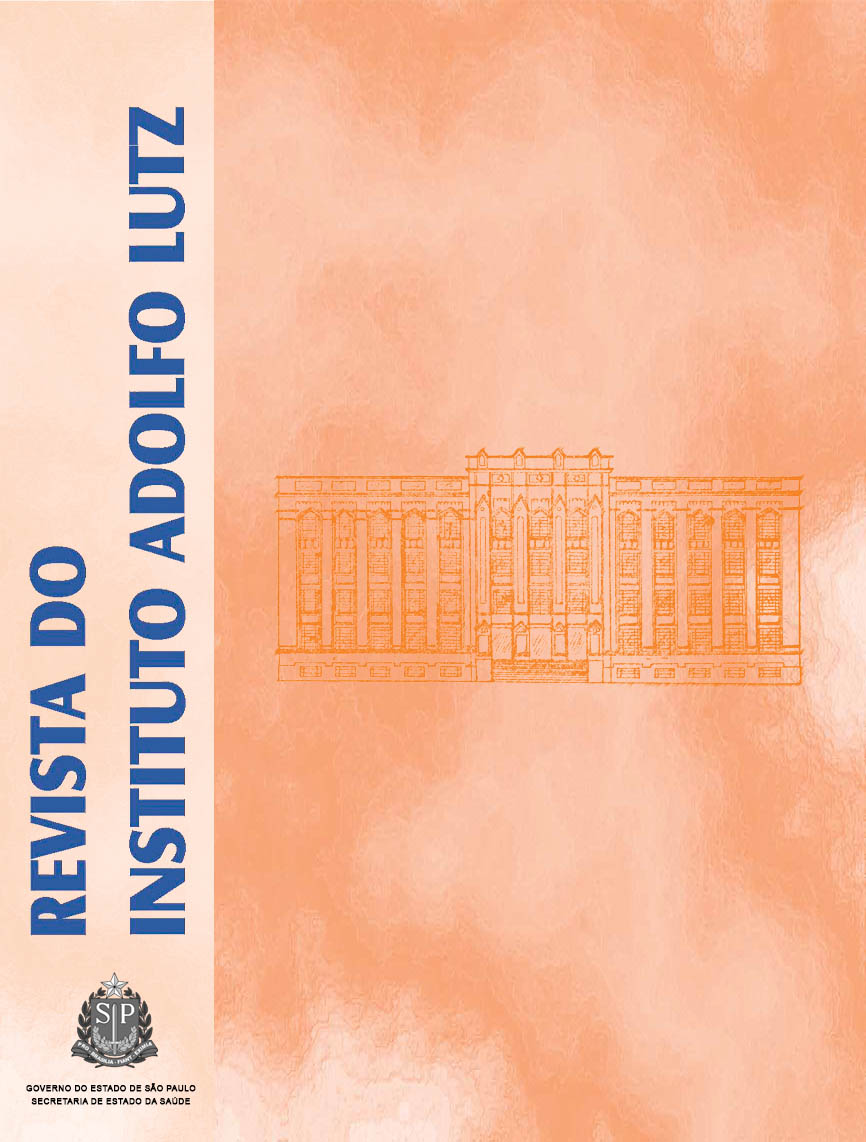Abstract
To monitor the efficiency of sodium hypochlorite as a sanitary barrier, was evaluated the activity against 32 strains of Staphylococcus aureus gathered from IPB-LACEN/RS from food implicated in foodborne disease outbreaks. Suspension tests were carried out: a 200 ppm free chlorine solution in the absence and presence of organic matter (1% whole milk); 100 ppm free chlorine solution; and four contact times (5, 10,15 and 30 min). The results: at 200 ppm, in absence of organic matter, all strains were inactivated. At 200ppm, with organic matter, 27 strains had remained viable even after a contact of 30 minutes. At 100 ppm it was necessary a 30 min contact to 24 strains if presented inactive. In conclusion, to use this disinfectant in protection from health of dinner companion, against bacterial genus confronted, must have at least 200 ppm of free chlorine, contact time not lower than 30 min and levels of organic residues no higher than 1%.References
1. Brasil. Ministério da Saúde. Secretaria de Vigilância em Saúde. Ministério da Saúde. [acesso em 06 de abri de 2009]. Disponível em: http://portal.saude.gov.br/portal/saude/visualizar_texto.cfm?idtxt=27500.
2. Brasil. Ministério da Saúde. Secretaria de Vigilância em Saúde. Coordenação de Vigilância das Doenças de Transmissão Hídrica e Alimentar. Ministério da Saúde. [acesso em 08 de novembro de 2006]. Disponível em: http://www.saude.gov.br/svs.
3. Tortora GJ, Funke BR, Case CL. Microbiologia. Porto Alegre: Artmed; 2000.
4. Brasil Ministério da Saúde. Agência Nacional de Vigilância Sanitária [ANVISA] Resolução RDC N° 216, de 15 de Setembro de 2004. [acesso em 24 de julho de 2004]. Disponível em: http://www.e-legis.bvs.br/leisref
5. Andrade NJ, Macêdo JAB. Higienização na indústria de alimentos. Falta edição? São Paulo: Livraria Varela; 1996.
6. Dychdala GR. Chlorine and chlorine compounds. In: Block, S.S. Disinfection, sterilization and preservation. 4. ed. Philadelphia, London: Lea & Fabiguer; 1991. p.131-151.
7. Wiest JM. Desinfecção e desinfetantes. In: Guerreiro M, Oliveira SJ, Saraiva D. et al. Bacteriologia especial: com interesse em saúde pública e saúde animal. Porto Alegre: Sulina; 1984. p. 51-66.
8. Food and Drug Administration – FDA. FDA/ Food Code 2001/ 21 CFR 178. 1010/Ch I (4-1-02 edition). [Accessed 29 jul 2007]. Available at: http://www.cfsan.fda.gov/~lrd/FCF178.html .
9. Sociedade Brasileira Ciência e Tecnologia de Alimentos - SBCTA. Higiene e sanitização para empresas de alimentos. Manual - Série Qualidade. Primeira ed. São Paulo, SP: PROFIQUA; 1995.
10. Brasil, Ministério da Agricultura. Pecuária e Abastecimento Portaria no 101, de 17 de agosto de 1993. Métodos de Análise Microbiológica para Alimentos. Diário Ofi cial [da] República Federativa do Brasil, Brasília, DF, p. 11937-45, 17 de ago 1993, Seção 1.
11. Macêdo JAB, Barra MM. O estado da arte do processo de desinfecção pelo uso de derivados clorados, em função do pH. Leite & Derivados. 2002; 65: 26-30.
12. Bessems E. The efect of practical conditions on the effi cacy of disinfectants.International Biodeterioration & Biodegradation. 1998; 41: 177-83.
13. Sander JE, Hofacre CL, Cheng IH & Wyatt RD. Investigation of resistance of bacteria from commercial poultry sources to commercial disinfectants. Avian Diseases. 2002; 46: 997-1000.
14. Wickramanayake GB, Spoul OJ. Kinectics of inativation of microorganisms. In: BLOCK, S.S. Disinfection, sterilization and preservation. 4. ed. Philadelphia, London: Lea & Fabiguer; 1991. Part I, Chapter 3.
15. Romão CMCA. Desinfecção esterilização química. In: Teixeira P e Valle S (org). Biossegurança: uma abordagem multidisciplinar. Rio de Janeiro: FIOCRUZ; 1998. p.133-62.
16. Langsrud S, Sundhein G. Factors infl uencing a suspension test methods for antimicrobial activity of disisnfectantes. J Appl Microbiol. 1998; 85 (6): 1006 – 12.
17. World Health Organization - WHO. Guidelenes on disinfection in animal husbandry for prevention and control of zoonotic disease. Geneva; 1984.(WHO/VPH/84.4).

This work is licensed under a Creative Commons Attribution 4.0 International License.
Copyright (c) 2009 Instituto Adolfo Lutz Journal
